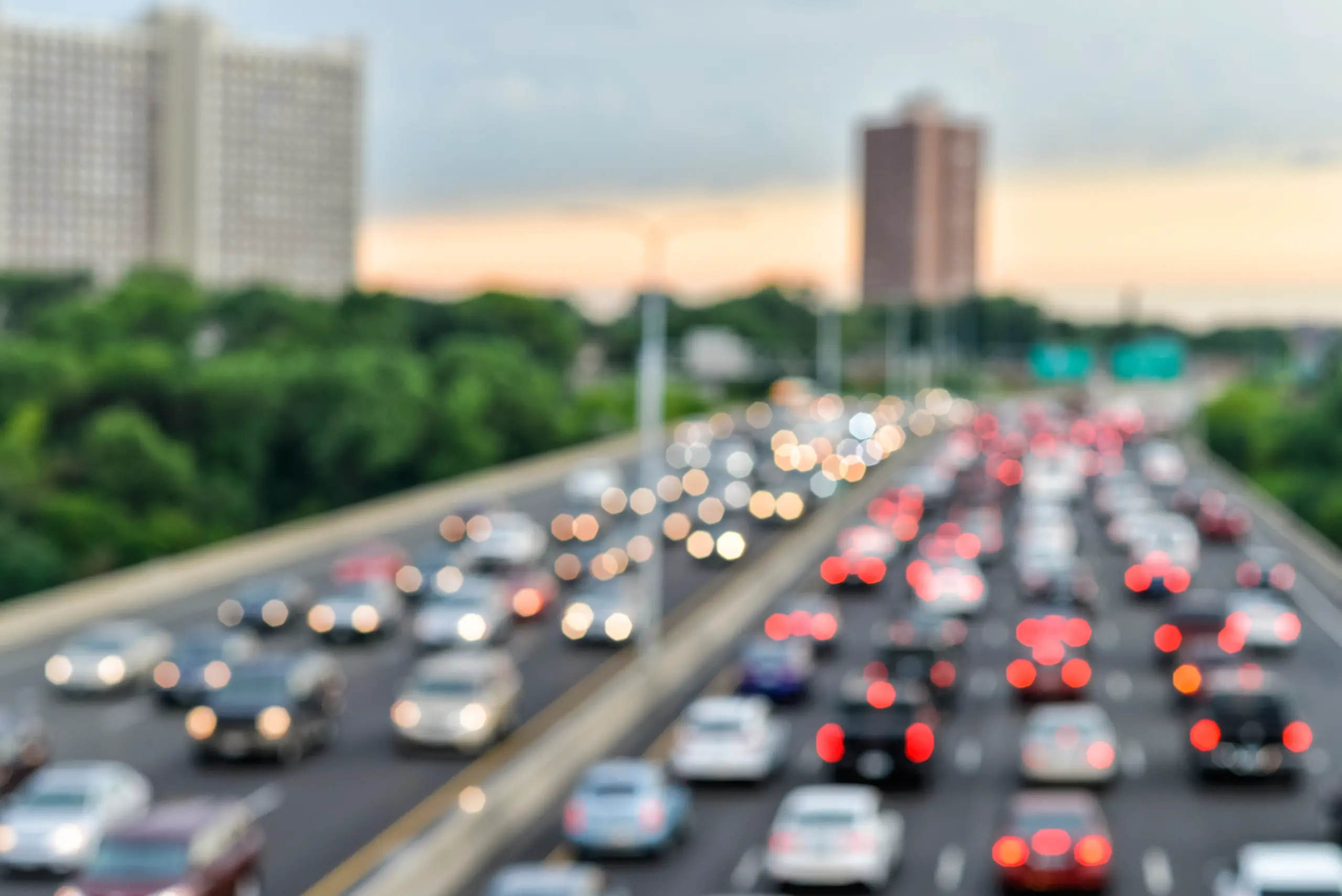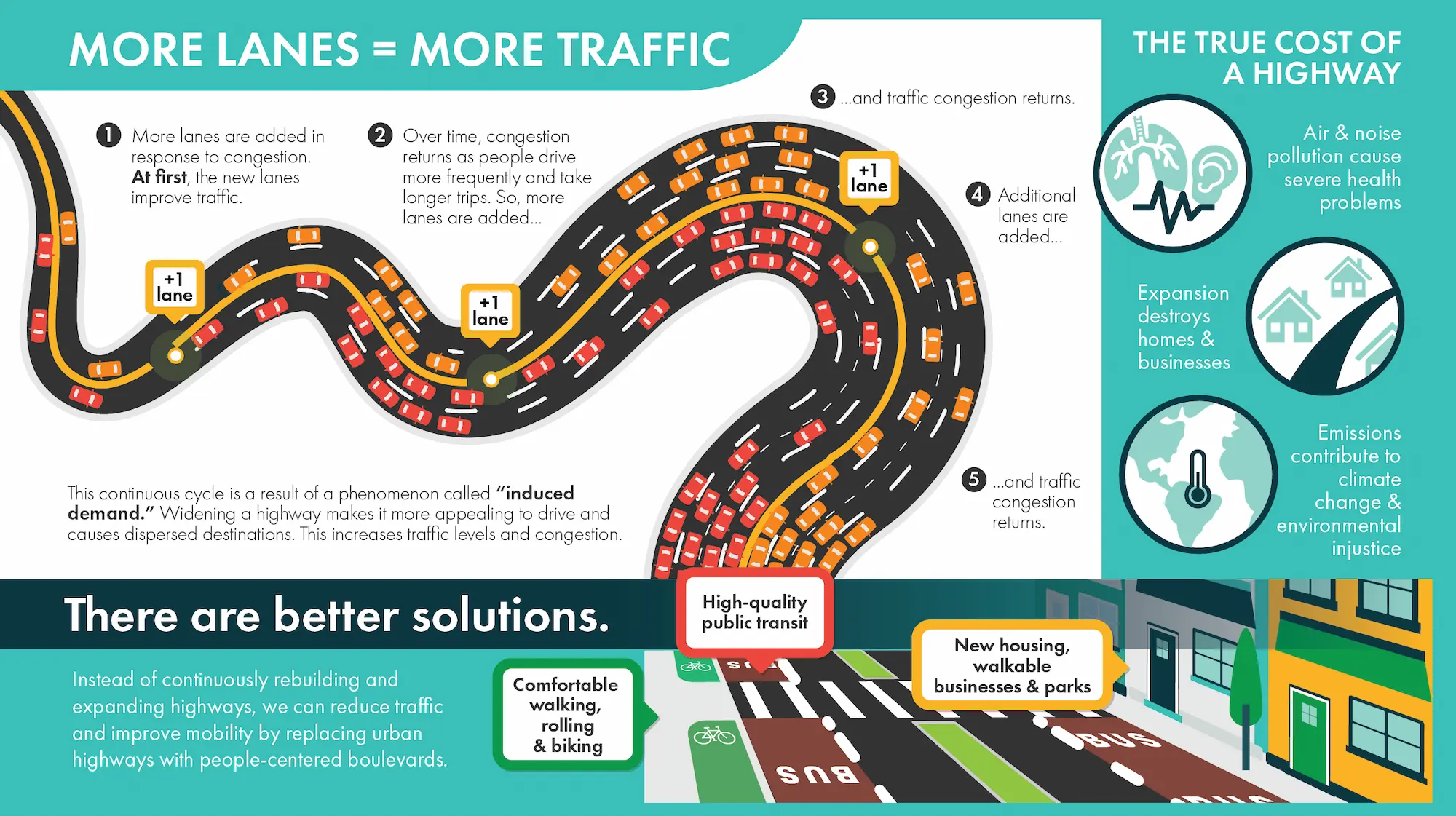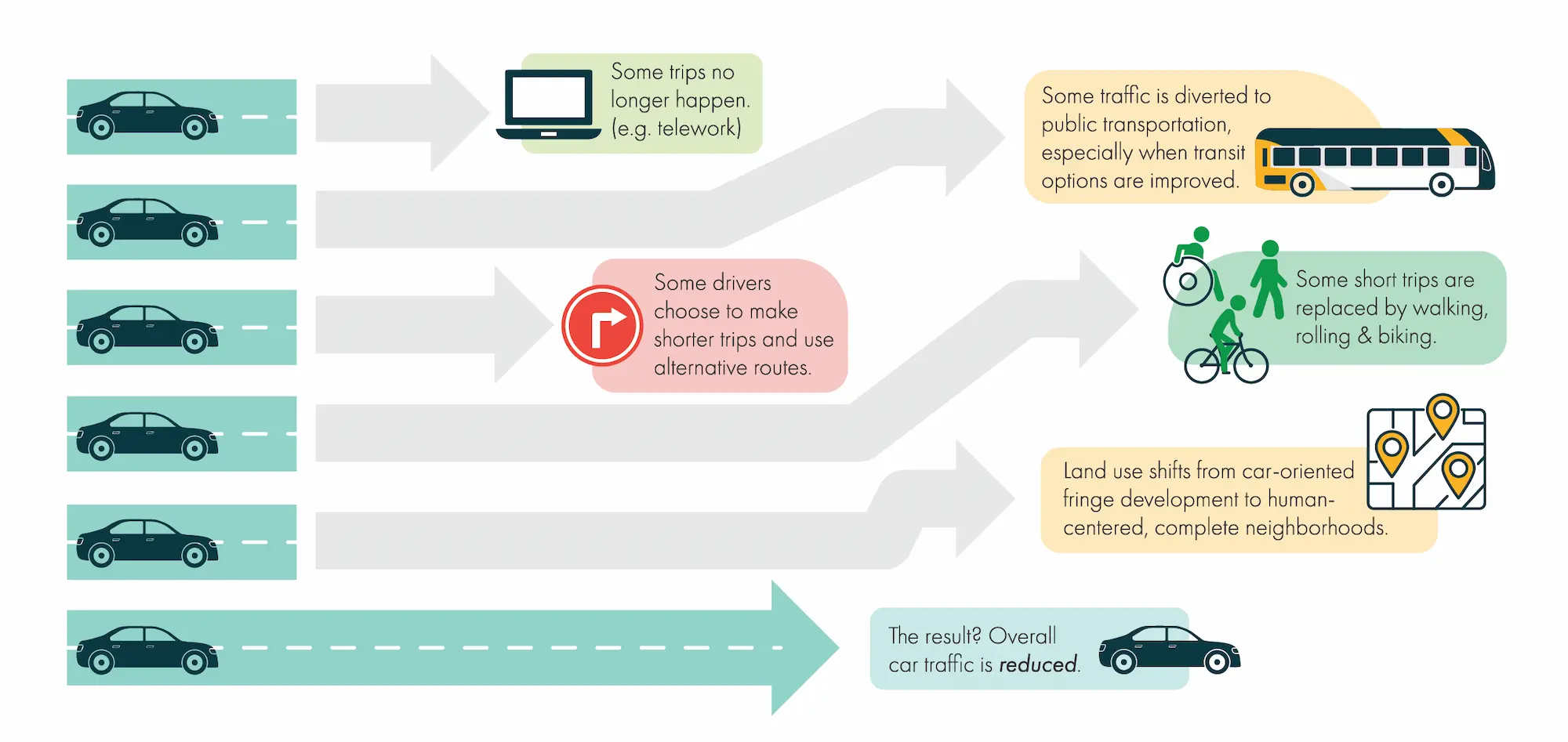
How does highway removal impact traffic? Decades of research and examples in other cities provide important lessons.

Widening Highways Doesn’t Work
Data has shown that expanding highways causes more people to drive, thus worsening traffic congestion. This is called induced demand, and it is why the country’s biggest highways are also the ones jammed with traffic.
You get what you build for. The boulevard would incentivize more efficient transportation modes and would have sufficient traffic capacity. The model MnDOT is relying on in their studies does not forecast this adjustment accurately.
Norm Marshall, President of Smart Mobility

Traffic Evaporation
Every time a highway has been removed, downsized, or temporarily closed due to construction, there have been predictions of traffic chaos. And every time, congestion has remained at normal levels. This is a result of the inverse of induced demand, called reduced demand or traffic evaporation.
When highways are converted into more walkable, bikeable, and transit-friendly streets with new housing, businesses, and other destinations, many people reevaluate their transportation options. Traffic evaporation is achieved through a combination of people driving at different times of the day, using alternate routes, working remotely, walking and biking for shorter trips, and taking public transit.
Learn more about Twin Cities Boulevard.
A better future is possible.